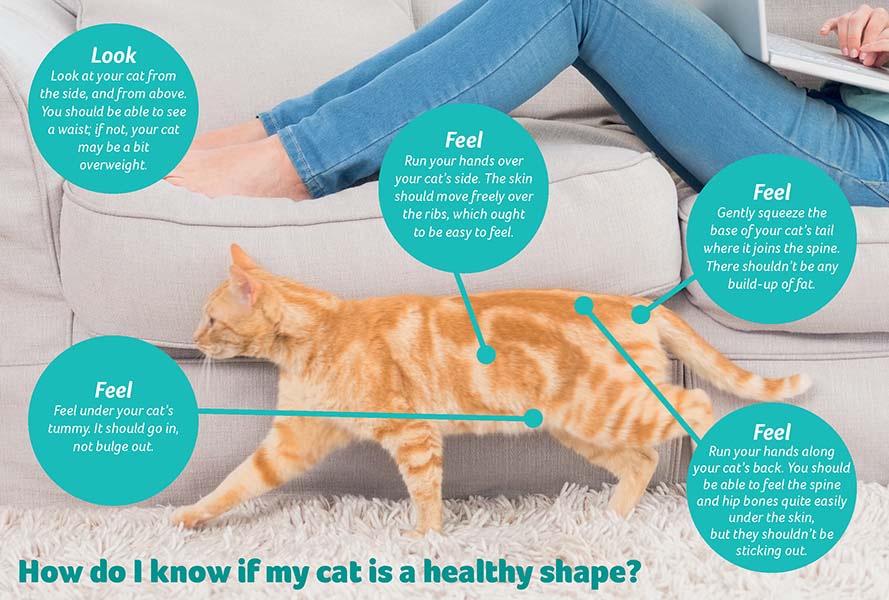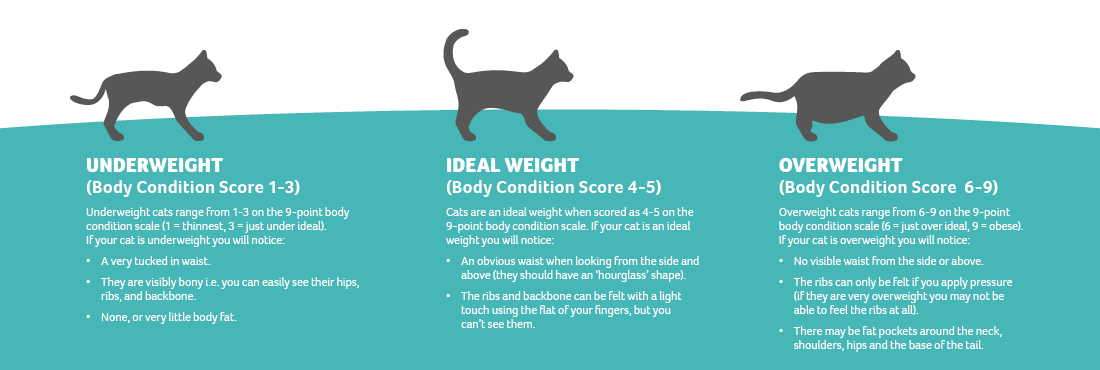If your cat is too heavy, it can really slow them down and lead to all sorts of medical problems. Overweight cats are more likely to get diabetes, arthritis and have a shorter lifespan. It can be hard to resist giving them treats, but maybe show you love them by spending time making a fuss of them or playing instead!
With cats, the best way to find out if they are overweight or not is a trip to the vet. Your vet will be able to weigh them – keep in mind their ideal weight will vary according to their size, age and breed, so there’s no one exact ‘ideal weight’ for cats.
One of the easiest ways you can keep an eye on your cat’s weight is by monitoring their body shape (yes, it really is that simple). While your cat’s weight might go up and down, their body shape should always stay roughly the same. They should have a waist when you look at them from the side or above and their tummy shouldn’t bulge out:

By feeling and looking at their body, you can carry our a ‘Body Condition Score’, which will tell you where your cat sits on the 9-point body condition scale:

How to do a Body Condition Score
- Run your hands along your cat’s sides. The skin should move freely over the ribs, which you should be able to feel with a light touch.
- Run your hands along your cat’s back. You should be able to feel the spine and hipbones under the skin without being able to see them.
- Gently feel the base of your cat’s tail. There shouldn’t be a build-up of fat.
- Feel under your cat’s tummy. It should go in, not bulge out.
- Look at your cat from the side and from above. You should be able to see a waist. If not, your cat may be overweight.
If your cat is looking pretty podgy (body condition score six to nine) it might be worth putting them on a diet. Make sure you feed them the right food for their age – we’d always recommend a complete, commercial diet as this will make sure they’re getting all the nutrients they need. Remember to follow the instructions on the packet as this will tell you how much you should be feeding your cat. If you’re unsure, chat to your vet or vet nurse who’ll be able to give you specific advice. You can read more advice about obesity in cats on our Hub.
If your cat suddenly starts losing weight, or loses weight very quickly, take them to the vet. Sometimes medical problems can cause sudden weight loss so it’s best to get this checked out.
